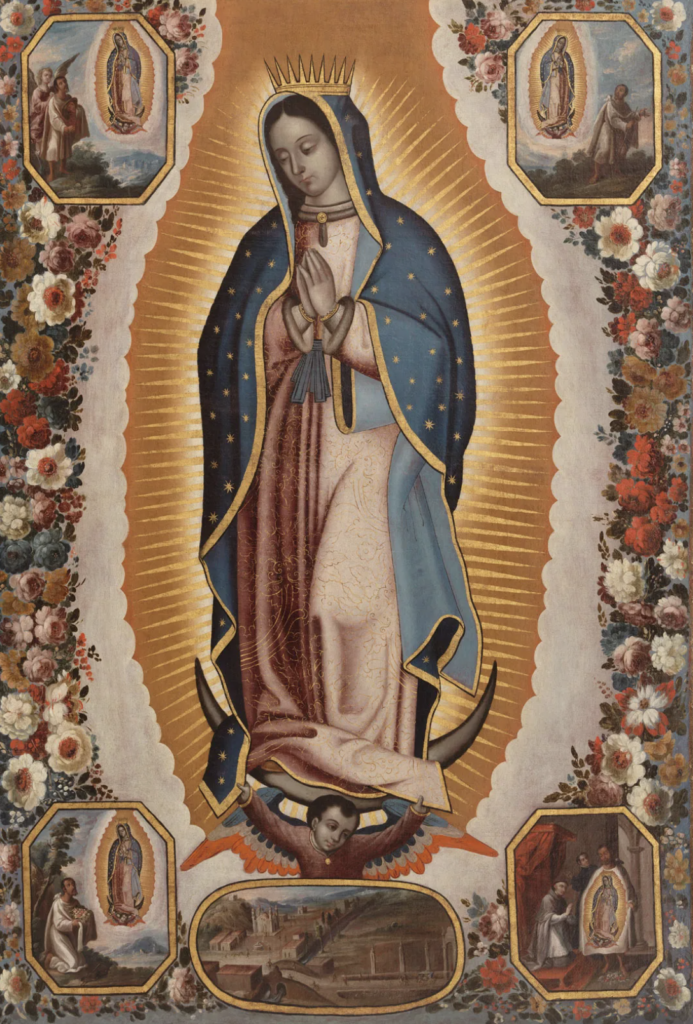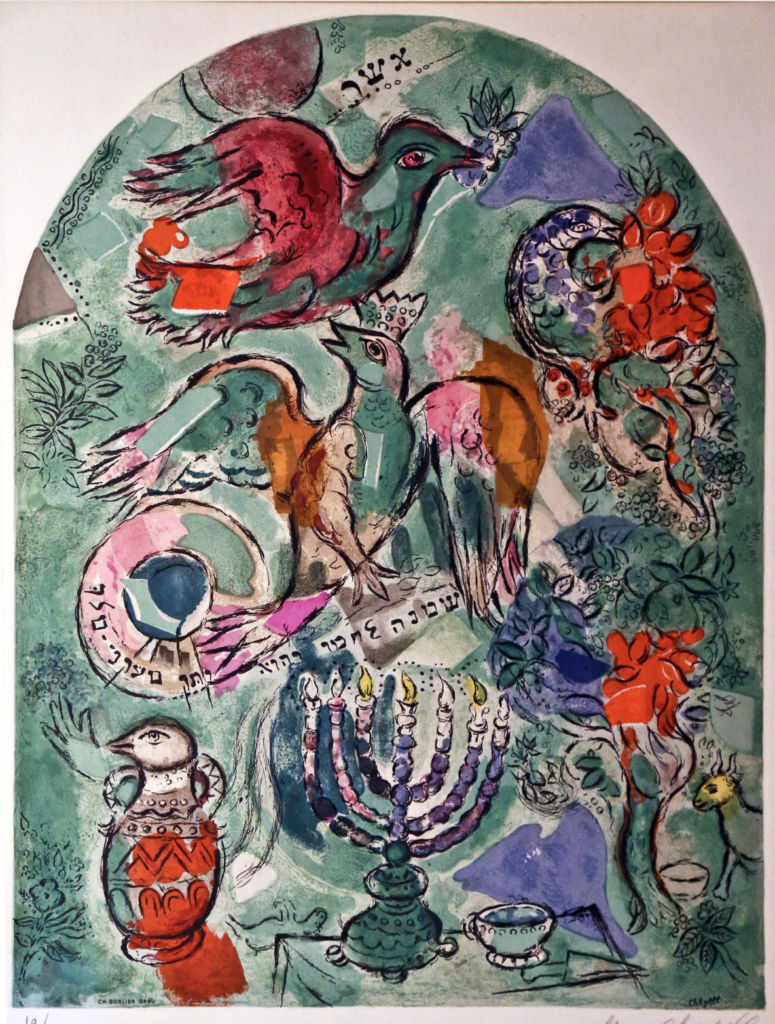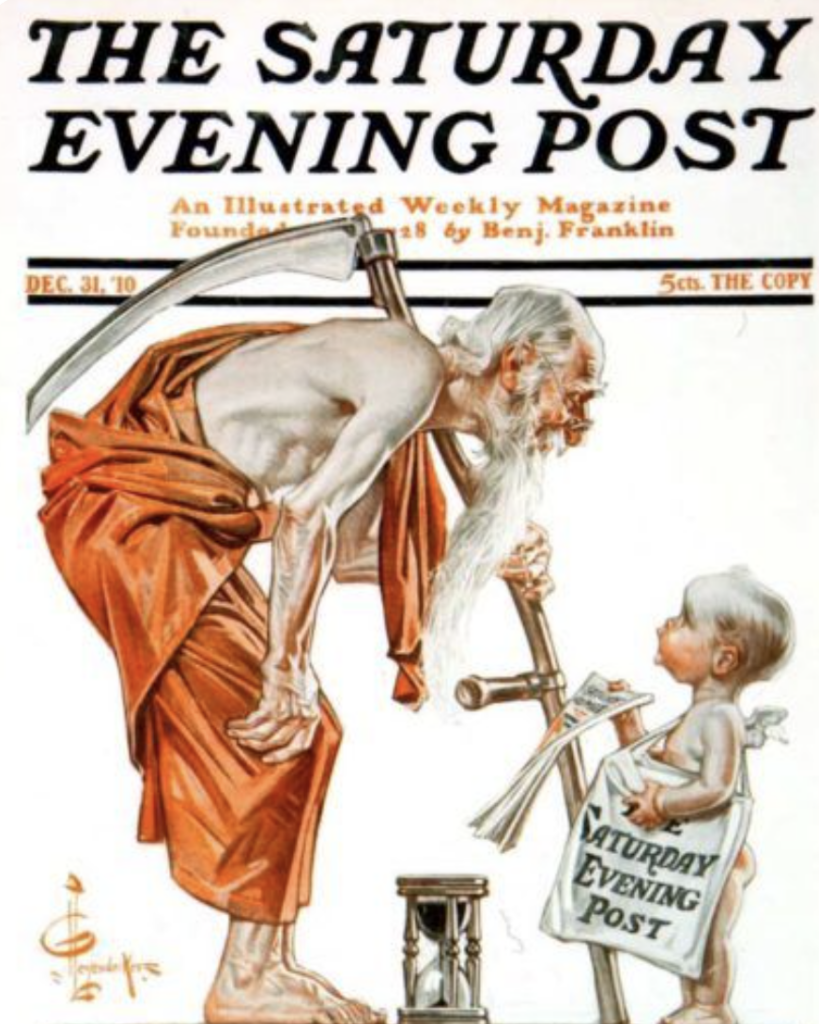By Noelle E. DeSantis
Illustration by Ed Wheeler, Santa Classics
Art of the Holidays
The “Holiday Season” is called a season for good reason. Spanning from Thanksgiving to the final moments of December 31st, this time of year is rich with celebrations and traditions that bring people together. Across cultures and history, art has served as a powerful reflection of beliefs, customs, and collective values. Through visual symbols, themes, and narratives, artwork captures the spirit of various holidays, offering insight into the traditions of both the past and present.
Let’s look at just a few December celebrations through art…
Bodhi Day (December 8)
Bodhi Day, a Buddhist holiday, commemorates the day Siddhartha Gautama attained enlightenment under the Bodhi tree, becoming The Buddha. In fine art, this serene and sacred event is often depicted through meditative imagery of the Buddha beneath the Bodhi tree. These works emphasize tranquility, spiritual awakening, and the pursuit of enlightenment, echoing deeply rooted Buddhist artistic traditions.

Siddhartha at the Bodhi Tree, 100s-200s CE, courtesy of the Cleveland Museum of Art
Feast Day of Our Lady of Guadalupe (December 12)
This feast celebrates the Virgin Mary’s apparition to Juan Diego in 1531 in Mexico. The image of Our Lady of Guadalupe has become an enduring symbol of faith, hope, and cultural identity in Latin America. Her significance extends into art, particularly religious works that depict her surrounded by radiant light. Mexican artist Frida Kahlo, known for intertwining religious themes with indigenous culture, often referenced this powerful symbol in her deeply personal works.

Our Lady of Guadalupe, Circa 1720 by Antonio de Torres, courtesy of the Los Angeles County Museum of Art

Diego on My Mind, 1943 by Frida Kahlo, courtesy of the Jacques and Natasha Gelman Collection of Mexican Art
Yule (December 21 – January 1)
Rooted in ancient pagan traditions, Yule marks the winter solstice—the shortest day and longest night of the year. It celebrates the rebirth of the sun as daylight begins to grow. Rich symbols such as evergreen trees (for endurance), candles (for the winter sun), and the Yule tree (for renewal) are central to this tradition. While not explicitly tied to Yule, the serene winter landscapes of 19th century artists like Walter Launt Palmer evoke the spiritual connection to nature that resonates with Yule’s celebration of rebirth and continuity.

Stream in Winter, 1913 by Walter Launt Palmer, courtesy of Godel & Co. Fine Art
Festivus (December 23)
Festivus is a modern addition to the December calendar, originating as a family tradition in 1966 before being popularized by the TV series Seinfeld in 1997. Celebrated as an alternative to the commercialism of the holidays, Festivus features quirky traditions such as the “Airing of Grievances” and the “Feats of Strength.” The unadorned aluminum pole, a signature symbol, stands in stark contrast to traditional holiday decor. While Festivus-inspired art may not yet grace museum walls, it has found its way into pop culture through mugs, cards, and even festive sweaters.

Festivus by Joel Tesch
Christmas (December 25)
Christmas, celebrating the birth of Jesus Christ, has inspired countless masterpieces in fine art. The Nativity—depicting Mary, Joseph, and baby Jesus in the manger—was perfected during the Renaissance by artists like Michelangelo, Leonardo da Vinci, and Botticelli. Symbolic elements such as the donkey (Old Testament) and the ox (New Testament) highlight the transition between biblical eras.
Beyond its religious roots, Christmas has evolved into a secular celebration of giving, love, and joy. Symbols such as Christmas trees, stockings, gifts, and Santa Claus have become universally recognized, allowing people of all backgrounds to share in the holiday spirit.

Detail from The Nativity at Night, Circa 1490 by Geertgen tot Sint Jans, courtesy of the National Gallery of Art, London.
Hanukkah (December 25 – January 2)
Starting on the 25th day of Kislev, which may occur on the Hebrew calendar anytime from late November to late December, the Jewish Festival of Lights commemorates the rededication of the Second Temple in Jerusalem. Celebrated over eight days and eight nights, each evening a candle is lit on the menorah, the central symbol of Hanukkah—along with gift giving, dreidel spinning, and sharing festive meals. Marc Chagall, an important early modernist artist, frequently wove symbols of his Jewish faith and cultural heritage into his works, capturing the essence of Jewish traditions through his vibrant, dream-like style.

Marc Chagall courtesy of the Ralli Museums
Boxing Day (December 26)
Traditionally observed in the United Kingdom and Commonwealth countries, Boxing Day has its roots in charity and generosity. Themes of giving and social conscience are often depicted in Victorian-era art, which highlights scenes of distributing alms and helping the poor.

Alms by Janos Thorma, Private Collection
Kwanzaa (December 26 – January 1)
Kwanzaa celebrates African American culture and heritage through seven guiding principles: unity, self-determination, collective responsibility, cooperative economics, purpose, creativity, and faith. These values are often expressed through vibrant and colorful art that incorporates African motifs, symbols, and patterns. Such works celebrate Black identity and pride, reflecting a strong connection to history and community.

Detail of Kwanzaa Elements, by Marcella Muhammad
New Year’s Eve (December 31)
The final celebration of the year, New Year’s Eve marks the passage of time and the hope for a fresh start in the coming new year. Artistic depictions often feature Father Time, a modern embodiment of ancient deities like the Celtic Holly King or Greek god Chronos, passing the baton to Baby New Year. These symbols of rebirth and renewal resonate with the universal themes of starting anew.

Saturday Evening Post, 1911, by Joseph C. Leyendecker
Three Kings Day, Dia de los Reyes, or the Epiphany (January 6)
This Roman Catholic holiday may land well past December, but it’s highly celebrated in Latin American cultures—sometimes more so than on Christmas day with feasts, parades, and gift-giving. Three Kings Day is the culmination of the 12 days of Christmas when the three kings (magi or wise men) reached the manger to honor the arrival of baby Jesus. Although the birth of Jesus is celebrated on Christmas Day, the three kings didn’t reach him until twelve days later.

Detail from Adoration of the Magi, 1504, by Albrecht Durer, Uffizi Gallery, Florence, Italy
Each of these holidays, with their unique origins and meanings, finds rich expression in art. From ancient traditions to modern innovations, these works reflect the spiritual, cultural, and social significance of celebrations across time and geography.
###

